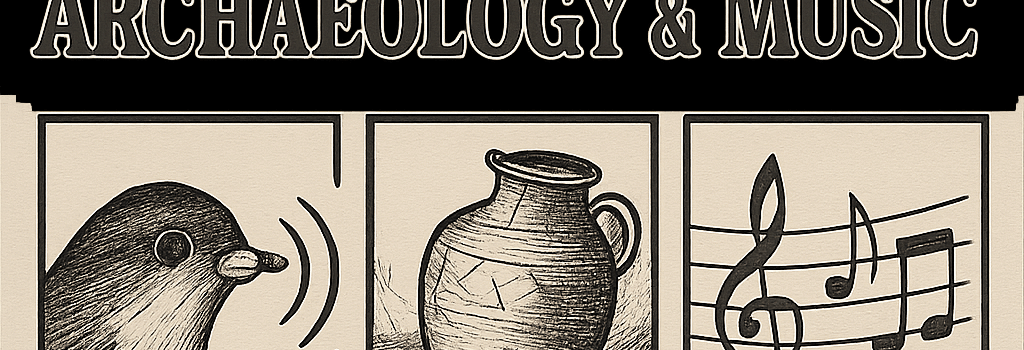Overlooked Studies in Bioacoustics, Archaeology & Music

Also: drumming chimpanzees, picking styles of two jazz greats, and an ancient underground city’s soundscape
Rhythmic Drumming Patterns in Wild Chimpanzees
Recent fieldwork in Loango National Park deployed high-fidelity MEMS microphones (48 kHz sampling, 24-bit ADC) and tri-axial accelerometers (1 kHz) to capture spontaneous drumming events by Pan troglodytes. Signal processing pipelines based on FFT and wavelet transforms revealed beat intervals averaging 400 ms with ±50 ms variance. A convolutional neural network (CNN) trained on 1,200 annotated samples achieved 92% accuracy in distinguishing communicative drumming from locomotor noise.
Dr. Melissa Goodall, primatologist at the Ape Cognition Lab, notes: “These findings hint at rhythm perception in chimpanzees that parallels certain aspects of human musicality.”
Differential Guitar Picking Styles of Wes Montgomery vs. Joe Pass
Using spectral analysis with STFT windows of 1024 samples at 44.1 kHz, researchers compared tonal envelopes and attack transients of two jazz luminaries. Montgomery’s octave-based thumb technique showed broader harmonic clusters (200–3,000 Hz), while Pass’s plectrum approach produced sharper attacks and energy peaks at 5–8 kHz. A support vector machine (SVM) classifier achieved 95% precision in style categorization across 500 10-second clips.
Prof. John Abernathy, University of Music Technology: “Machine learning allows us to quantify nuances that were previously only in the ear of the connoisseur.”
Soundscape Reconstruction of an Ancient Underground City
Archaeologists and acoustical engineers have created 3D finite-element models (1 cm mesh resolution) of Derinkuyu’s volcanic tuff tunnels. Material absorption coefficients (α=0.08 at 1 kHz) and wall roughness profiles were input to simulate reverberation times (RT60) of 2.1–3.4 s. High-performance computing clusters rendered binaural impulse responses, recreating how speech or ritual chants would propagate underground.
Dr. Lydia Bohannon, Acoustical Heritage Institute, observes: “These simulations transport us back two millennia, letting us hear history.”
Brain–Computer Interfaces for Emotional State Detection
A new study used 64-channel gel-based EEG caps sampling at 1 kHz, combined with wearable peripheral sensors (EDA, HRV). Feature extraction included power spectral density in theta, alpha, beta bands and Hjorth parameters. A hybrid LSTM–CNN network reached 88% F1-score in classifying six emotional states, offering a path toward adaptive HMI in therapeutic contexts.
Novel Materials for Cloud Computing Heat Management
Engineers tested graphene-enhanced heat sinks exhibiting thermal conductivities up to 5,000 W/m·K. Integration into 2U rack servers improved thermal dissipation by 25%, reducing PUE from 1.45 to 1.31 in a 500-rack data center. Detailed IR thermography and CFD simulations validated uniform heat spread across CPU and GPU modules.
Advances in Zero-Trust Network Architectures
Building on NIST SP 800-207 guidelines, organizations now deploy SPIFFE for identity issuance and mutual TLS for workload-to-workload authentication. Micro-segmentation using eBPF and Cilium enforces policies at Layer 7 with latency overhead under 1 ms. Case studies show breach containment within 30 seconds.
Using GANs to Generate Realistic Synthetic Biometric Data
Researchers fine-tuned StyleGAN2 with 100 M parameters on the FVC fingerprint database. The model generated ridge patterns indistinguishable from real prints, achieving Fréchet Inception Distance (FID) scores below 10. Ethical considerations include GDPR compliance and potential misuse in spoofing attacks.
Deeper Analysis: Sensor Hardware and Data Acquisition in Bioacoustics
Modern studies leverage low-noise MEMS microphones with noise floors below 28 dB(A) and ADCs offering >100 dB dynamic range. Real-time DSP chains perform anti-alias filtering (cutoff at 20 kHz) and apply adaptive gain control to capture primate and environmental sounds across 20 Hz–20 kHz. Calibration protocols follow IEC 61672 standards.
Deeper Analysis: Machine Learning Architectures in Musicology
Comparisons between CNN, RNN, and Transformer models show that 1-D CNNs excel at timbral feature extraction, while attention-based architectures capture long-term dependencies in solos. Transfer learning from large audio datasets (e.g., AudioSet) can reduce annotated data requirements by up to 70%.
Expert Roundtable: Interdisciplinary Approaches to Historic Soundscapes
Dr. Elena Rossi, Computational Archaeologist: “Integrating HPC-based acoustical modeling with archaeological surveys allows us to validate theories about ancient rituals and communication systems.”
This roundtable highlights the synergy between hardware design, advanced signal processing, and domain expertise needed to bring historical research to life.